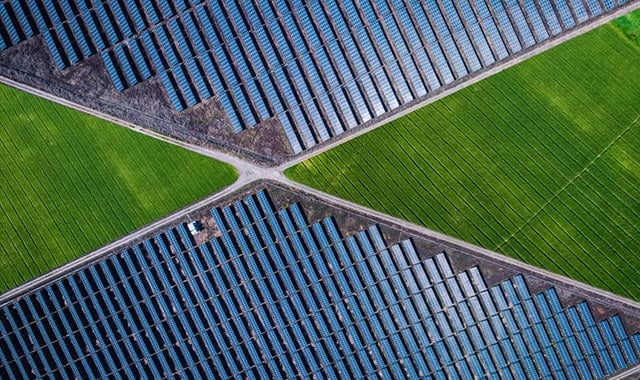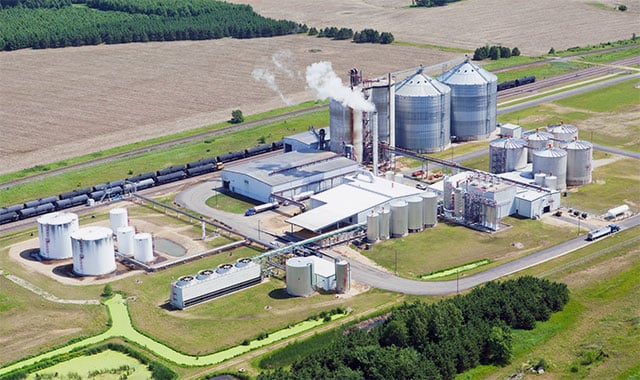What We Need to Create Resilience in 2022 and the Systems-Based Solutions to Get There
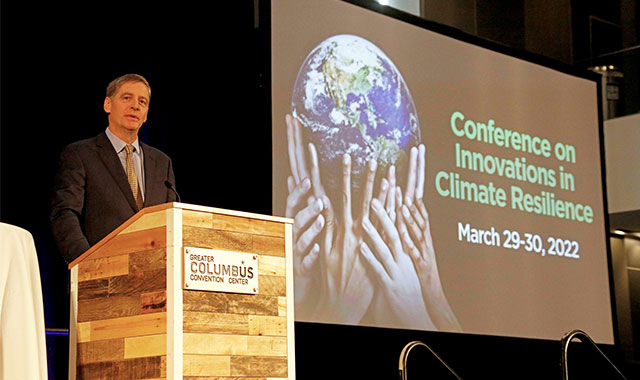
The challenges and changes of the last two years illuminate that systems-based science and engineering is the key to protecting and preserving our health, natural resources and critical infrastructure. It’s a behemoth task that cannot be accomplished by any one approach or entity alone. Yet, integrating often dissimilar capabilities in new ways is in everyone’s interest and everyone has a role to play. In the coming year, government leaders, entrepreneurs, scientists, engineers and innovators must recognize the complex nature of the problems that need solving and find new ways of bringing systems together to explore and advance scientific research and technological breakthroughs that make our world more resilient.
Safeguarding Public Health with Predictive Medical Technology
As the world becomes increasingly connected, we must rethink the way public health and wellbeing are safeguarded. One-off reactive solutions are no longer sufficient. The pandemic illustrated that prediction of threats is critical to enabling engineering systems capable of anticipating zoonotic jumps. Prediction is also necessary to deliver therapeutic firebreaks and ensure we have the supply chains needed to grow and enhance our national and global biosecurity capabilities and better protect ourselves against evolving health threats. This will require investments in research and product production to drive the development of essential diagnostics and vaccines, as well as therapeutics and decontaminants that could be used in the event of a natural or engineered biothreat attack. Core to this is the power of high-end data modeling and advanced machine learning to assess public health, so we can identify and help protect the most at-risk populations before the next public health emergency strikes. If we can engineer and implement a biosecurity and pandemic preparedness and prevention system that leverages a global network of constantly evolving technology, we can better proactively defend the world from threats on the horizon.
Protecting the Environment We Rely on to Live
There is nothing more important to human survival than access to clean water and clean air. Both are endangered by several omnipresent environmental threats, including one that is lesser known — perfluoroalkyl and polyfluoroalkyl substances (PFAS).
New research from the Environmental Working Group (EWG), a nonprofit, nonpartisan organization devoted to health and environmental research—confirmed that PFAS are detectable in all major water supplies in the United States. Known for their durability and longevity, PFAS — widely known as “forever chemicals” — are used in everything from furniture and clothes to food packaging and firefighting foam, and they’ve accumulated in the environment over time because they can take hundreds to thousands of years to break down. Growing concerns about the health implications of consuming PFAS through water have prompted the current administration to set enforceable federal regulations of limit the spread of these potentially cancer-causing chemicals and task the U.S. Environmental Protection Agency (EPA) with establishing firm guidelines.
And while applications that effectively remove PFAS from water exist — like filtering or incinerating the chemicals — they only transfer PFAS from one problem area to another. Fortunately, the advent and engineering of a new PFAS destruction technology not only removes, but completely eradicates these substances from water, eliminating the need to dispose of toxic PFAS that have been filtered. Given the mounting evidence of health risks stemming from PFAS, we must find ways to expedite the commercial deployment of promising destruction technologies.
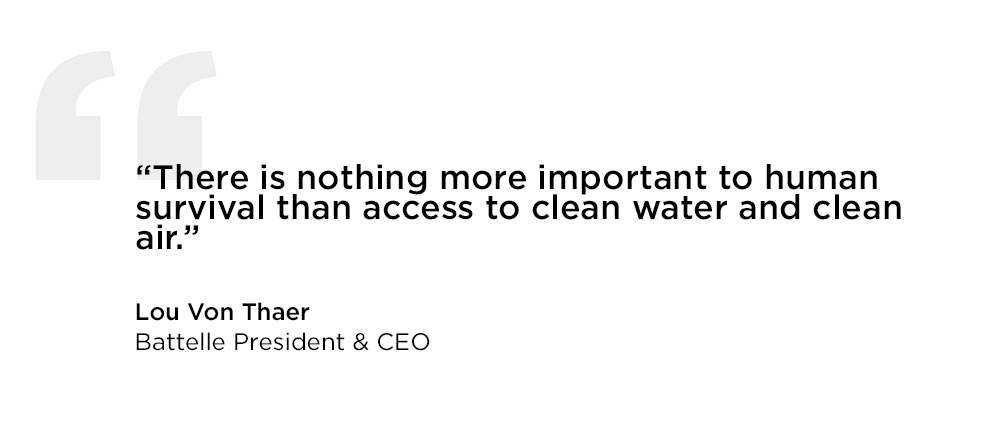
Protecting the planet’s most precious resource demands we pioneer the engineering of innovative recycling systems. The world currently produces and discards 360 million tons of plastic every year. The accumulating waste is destroying animals and their habitats and leaching toxic substances into our water and soil. Novel and effective recycling systems can stop this dangerous buildup; however, not all recycling processes are created equal. There is new and emerging research on developing advanced plastics recycling technologies to break down hard-to-recycle plastics and enable them to be upcycled and reused as other beneficial products. This leads to many benefits, such as unlocking value in waste that would otherwise be difficult to salvage, then repurpose and develop it into new products made from these materials which can be recycled repeatedly. This supports the creation of a circular economy and helps keep more plastic waste out of oceans and landfills, while reducing the use of fossil-based energy and lowering CO2 emissions. It’s estimated that as much as half of all global plastics packaging could be recycled by 2040 if chemical recycling technologies become widely adopted.
Building infrastructure that Does More with Less
We also need to evaluate our current plans to reduce global warming. The full promise of solar and wind technology will never be realized until we can build grid-scale storage capabilities to allow power to continue to flow when the sun doesn’t shine and the wind doesn’t blow. Without grid-scale storage we would have to back up our renewable power systems with carbon-based power at near full-scale need of the grid—a very expensive and unsustainable proposition. Grid-scale storage is under development at our Pacific Northwest National Laboratory and entrepreneurial start-ups. Particularly interesting are non-lithium solutions that aren’t reliant on lithium or rare earth elements that could provide the storage to enable renewables full potential without the environment impact of mining rare earth elements and lithium (which is better suited for portable applications).
Building resiliency demands robust critical infrastructure built to endure and lessen humanity’s impact on our planet’s climate. Today’s global energy sector demands new and unique ways to improve operations and control costs while meeting sustainability goals and standards. The world is working to transition to clean energy solutions, but it will take time and more immediate solutions are urgently needed in the interim. The United Nations has identified carbon management technologies as one such solution. Incredible progress has been made in this field in the last 20 years, but we must now accelerate the advancement and commercial deployment of crucial carbon capture and storage (CCS) technologies that safely keep carbon emissions out of the air and, instead, place them in underground reservoirs. Natural gas producers can implement CCS to capture emissions while increasing their use of clean hydrogen and enhanced oil recovery (EOR), and other utilization technologies can reduce overall emissions in the oil and gas industry as the larger energy transition takes place. This will help curb carbon emissions and keep the temperature of the planet in check while greener energy practices ramp up.
Because transportation has always been and will always be irrevocably connected to the health of the planet, our daily commutes and the system of systems that make it possible will be pivotal as we look for ways to mitigate emissions from all modes of travel in the years ahead. Engineering of Intelligent transportation and connected vehicles have the potential to reduce congestion and environmental impact and improve safety. Smart transportation systems collect and assess valuable data in real-time, allowing administrators to efficiently track and address issues and improve operations and use resources more responsibly. However, taking intelligent transportation system from concept to reality is no small task. It will require rigorous research and robust expertise to implement safe, highly mobile, environmentally responsible vehicles.
And with extreme and volatile weather events on the rise, it’s imperative that we find ways to bolster fundamental infrastructure to be more efficient and resilient. This will require engineers and scientists capable of updating, upgrading and developing complex materials, structures and facilities that can withstand extreme heat, cold, wind and other harsh conditions. We must leverage existing talent and solutions and groom the next generation of problem solvers to ensure we have a deep understanding of the challenges we face and the knowledge we need to properly address them. Battelle is deeply committed to innovations in climate resilience and is hosting a first-of-its-kind meeting on innovations in climate resilience in collaboration with the National Labs. This event focuses on solutions and convenes communities in national security, environment, infrastructure, health and agriculture.
Applied Science and Technology is Our Not-So-Secret Weapon
We all share this planet, and we all have a vested interest in protecting and preserving its health and our own. To make people and the planet more resilient in the years to come, we must fully harness the power of applied science and technology that integrate capabilities into systems. Collaborating across industries and sectors and investing in research and innovation now is the path to a strong and sustainable future for all — and with science at our side, we can tackle whatever lies ahead.
In this spirit, last month Battelle hosted its inaugural Innovations in Climate Resilience conference, gathering industry leaders and government officials to discuss innovative solutions to the pressing challenge of Climate Resiliency. Click here to review the highlights from the event.
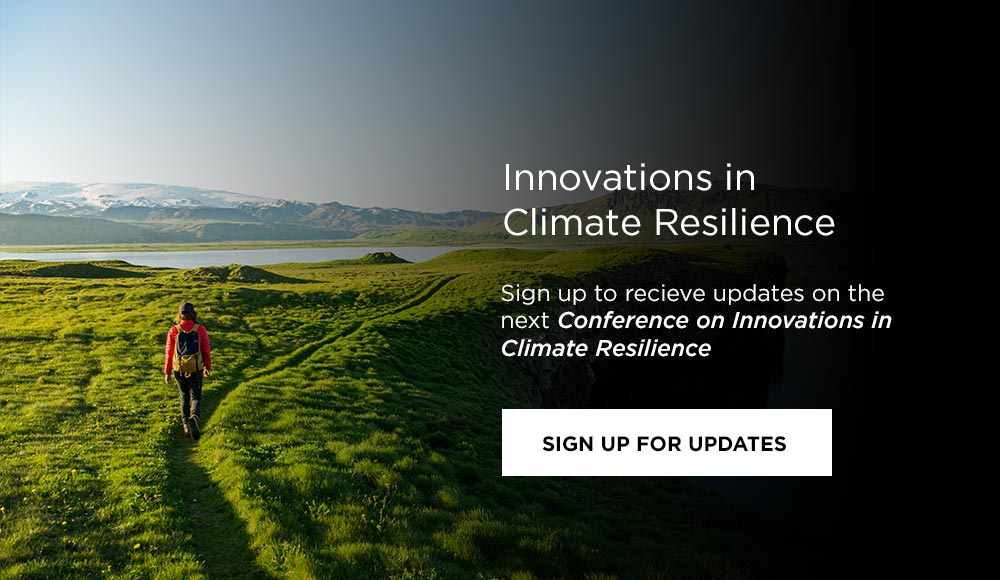
Related Blogs
BATTELLE UPDATES
Receive updates from Battelle for an all-access pass to the incredible work of Battelle researchers.
